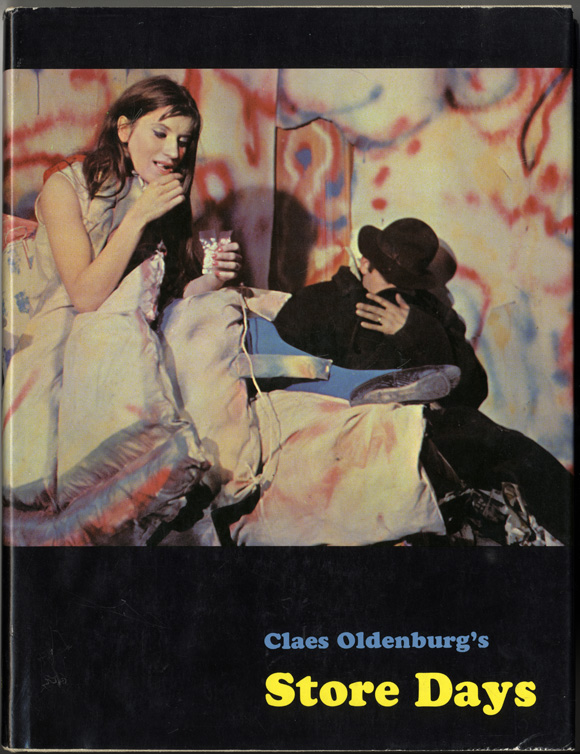Alfred H. Barr, Jr.: Cubism and Abstract Art: Painting, Sculpture, Constructions, Photography, Architecture, Industrial Art, Theatre, Films, Posters, Typography (1936)
Filed under book, catalogue | Tags: · abstract art, abstraction, architecture, art, art history, avant-garde, constructivism, cubism, dada, design, expressionism, fauvism, film, futurism, impressionism, painting, photography, sculpture, suprematism, surrealism, theatre, typography

The catalogue of the first MoMA’s retrospective of modernism, held 2 March-19 April 1936, laid the theoretical foundation of the museum. Its jacket contains a notorious chart of modernist art history, the Diagram of Stylistic Evolution from 1890 until 1935.
“The catalogue remains an important historical document (as does that for Fantastic Art, Dada, Surrealism). It set abstraction within a formalist framework that—ignoring the intellectual byways of French symbolism, German idealism, and Russian Marxism of the previous thirty years—was shaped by the scientific climate that had started a century before. … The exhibition together with the widespread dissemination of its influential catalogue, established Cubism as the central issue of early modernism, abstraction as the goal.” (Sybil Gordon Kantor, 2003)
The exhibition later traveled to another 7 cities: San Francisco, Cincinnati, Minneapolis, Cleveland, Baltimore, Providence, and Grand Rapids.
Publisher Museum of Modern Art, New York, 1936
249 pages
via MoMA
Commentary: Meyer Schapiro (Marxist Quarterly, 1937), Susan Noyes Platt (Art Journal, 1988), Astrit Schmidt Burkhardt (Word & Image, 2000).
Publisher (incl. master checklist and press releases)
WorldCat
PDF (47 MB)
Comment (1)Claes Oldenburg: Store Days: Documents from The Store, 1961, and Ray Gun Theater, 1962 (1967)
Filed under artist publishing | Tags: · art, happening, installation art, performance, performance art, sculpture, theatre

““I’d like to get away from the notion of a work of art as something outside of experience, something that is located in museums, something that is terribly precious,” Oldenburg declared. In 1961 he presented a new body of work whose subject matter he had culled from the clothing stores, delis, and bric-a-brac shops that crowded the Lower East Side. The earliest Store sculptures, which debuted in spring 1961 at the Martha Jackson Gallery, at 32 East Sixty-Ninth Street, are wall-mounted reliefs depicting everyday items like shirts, dresses, cigarettes, sausages, and slices of pie. Oldenburg made them from armatures of chicken wire overlaid with plaster-soaked canvas, using enamel paint straight from the can to give them a bright color finish. At the gallery, the reliefs hung cheek by jowl, emulating displays in low-end markets.
In December 1961, Oldenburg opened The Store in the rented storefront at 107 East Second Street that served as his studio, which he called the Ray Gun Manufacturing Company. A fully elaborated manifestation of the project that he had begun months earlier, The Store conflated two disparate types of commerce: the sale of cheap merchandise and the sale of serious art. Oldenburg packed more than one hundred objects into the modestly sized room, setting previously exhibited reliefs alongside new, primarily freestanding sculptures. Everything was available for purchase, with prices starting at $21.79 up to $499.99. After The Store closed, on January 31, 1962, Oldenburg used the space to stage a series of performances collectively titled Ray Gun Theater.” (Source)
Selected by Claes Oldenburg and Emmett Williams
Photographs by Robert R. McElroy
Publisher Something Else Press, New York, 1967
152 pages
via penfold
PDF (83 MB)
Comment (0)Bojana Cvejić, Goran Sergej Pristaš (eds.): Parallel Slalom: A Lexicon of Non-aligned Poetics (2013)
Filed under book | Tags: · aesthetics, cinema, contemporary art, dance, east-central europe, non-aligned movement, performance, poetics, theatre, theory, yugoslavia
![]()
“What does it take to create one’s own concepts? What does it mean to own a concept? Parallel Slalom is an edited collection of essays that attempt to address these questions from the viewpoint of artistic and theoretical practices that have been developing since the 1960s, especially in the period after the breakup of Yugoslavia in 1991. Artists, dramaturges, theorists, editors, writers or ‘cultural workers’ who write or are written about in this volume don’t always belong to the same historical, geopolitical and cultural framework that the curator Ješa Denegri called, the ‘common Yugoslav cultural space’ also because a considerable number of writers come from contexts other than those in Eastern Europe. Yet they share a kind of thought that arises from within, or close to, artistic practice as a poetical instrument of looking past art into the production of political, social and aesthetic realms.”
“Among the concepts developed are: Americanism; artivisim; acting without publicizing; Chaplinism; cinema clubs; cinematic modes of action; contextual art; delay; delayed audience; digitality; East Dance Academy; generations; group sex; laziness; operation; politics of affection and uneasiness; proceduralism; protocol; radical amateurism; reconstruction, second-hand-knowledge; slideshow; temporary zones, shelters, and project spaces; tiger’s leap into history; unburdened, aesthetically; unlearned, terminally.”
Contributions by Ric Allsopp, Jonathan Beller, Ivana Bago, Bojana Cvejić, Isabel de Naveran, Tomislav Gotovac, Owen Hatherley, Ana Janevski, Janez Janša, Marko Kostanić, Bojana Kunst, Antonia Majača, Aldo Milohnić, Goran Sergej Pristaš, Mårten Spångberg, Mladen Stilinović, Miško Šuvaković, Terminally Unschooled, Terms study group, and Ana Vujanović.
Publisher Walking Theory ‒ TkH, Belgrade, and CDU – Centre for Drama Art, Zagreb, 2013
ISBN 8690589961, 9788690589968
411 pages
via Academia.edu
Publisher (TkH)
Publisher (CDU)
WorldCat
PDF (7 MB)
Comment (0)
